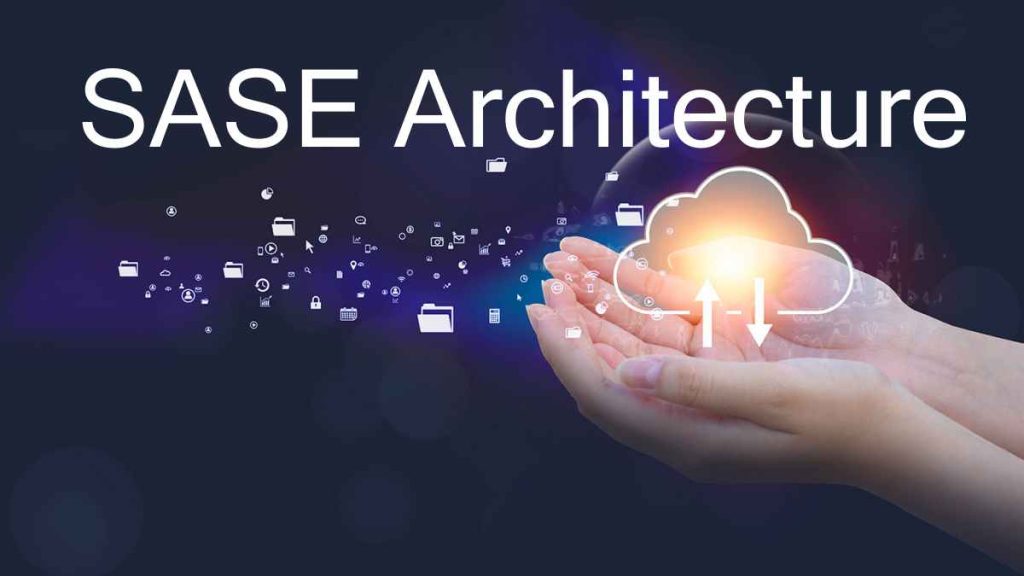The cybersecurity landscape is constantly evolving. New threats, threat groups, and challenges arise every day. As such, security professionals must continuously develop new concepts and solutions to tackle these threats and challenges. Secure Access Service Edge (SASE) is one of the most significant developments, providing organizations with a more flexible, scalable, and secure approach to network connectivity and data protection in modern distributed and cloud-centric environments. This article will explore SASE and why you should adopt SASE architecture.
What is Secure Access Service Edge (SASE)?
SASE is a concept in networking and cybersecurity that aims to combine network security and wide-area networking (WAN) capabilities into a single cloud-based service. SASE is a more flexible, scalable, and secure approach to network connectivity and data protection, especially in modern distributed and cloud-centric environments.
Traditional networking and security models often involve routing traffic from remote locations or users through a central data center or corporate network before accessing cloud services or the broader internet. SASE flips this model by moving security and networking capabilities to the cloud, closer to the point of access, such as users or devices.
Key components and features of SASE typically include:
- Network Security: SASE incorporates various security features such as firewalling, intrusion detection and prevention, data loss prevention, secure web gateways, and more, delivered as cloud-based services. These security services protect traffic regardless of the user’s location or the device they’re using.
- WAN Optimization: SASE integrates WAN optimization technologies to ensure efficient data transmission between locations and cloud resources. This optimization can improve application performance and reduce latency.
- Zero-Trust Architecture: SASE often embraces the zero-trust security model, where no user or device is inherently trusted, and access to resources is granted based on continuous authentication, verification, and least privilege principles.
- Software-Defined Networking (SDN): SASE leverages SDN to provide dynamic and flexible network configurations that adapt to changing traffic patterns and security requirements.
- Identity and Access Management (IAM): Identity management and access controls are central to SASE, ensuring that only authorized users with proper authentication can access resources, regardless of location.
- Cloud-Native Architecture: SASE services are typically hosted in the cloud, taking advantage of scalability, elasticity, and global reach.
- User-Centric Policies: Policies in a SASE architecture are often defined based on user identity, device type, location, and application requirements. These definitions enable granular control over access and security.
Why Adopt SASE Architecture?
SASE architecture offers several compelling benefits for organizations looking to enhance network security, improve performance, and streamline operations. Here are the top 10 reasons to consider adopting SASE:
- Enhanced Security Posture: SASE combines a comprehensive suite of security services, including firewalling, intrusion prevention, data loss prevention, and more, in a unified platform. This consolidated approach helps protect against a wide range of threats and vulnerabilities.
- Zero Trust Implementation: SASE aligns well with the zero trust security model, which treats every access attempt as potentially unauthorized until proven otherwise. This approach enhances security by requiring continuous authentication and verification before granting access to resources.
- Improved Performance: With SASE’s cloud-native architecture and optimization capabilities, organizations can experience improved application performance and reduced latency. WAN optimization techniques ensure efficient data transmission across different locations and cloud services.
- Simplified Management: Security and networking policies becomes more manageable with a centralized cloud-based platform, allowing for consistent policy enforcement and updates across the entire network, including remote locations and users.
- Scalability and Flexibility: SASE’s cloud-based nature enables organizations to scale their security and networking resources as needed. This flexibility is crucial for accommodating changing workloads and expanding business operations.
- Reduced Complexity: Traditional networking and security models often involve multiple-point solutions and complex configurations. SASE streamlines these complexities by offering a single platform integrating various security and networking functions.
- Global Reach: SASE leverages cloud infrastructure to provide global coverage, enabling users and devices to securely access resources from anywhere in the world without backhauling traffic to a central data center.
- Consistent User Experience: SASE ensures a consistent user experience regardless of the user’s location or device. This consistency is essential for maintaining productivity and user satisfaction, especially in distributed work environments.
- Cost Savings: Consolidating security and networking services into a single cloud-based platform can save costs by reducing the need for on-premises hardware and the associated maintenance and management expenses.
- Future-Proofing: As organizations evolve and embrace digital transformation, SASE provides a future-proof approach to network security and connectivity. Its adaptability to changing technology landscapes positions organizations to stay ahead of emerging threats and trends.
It’s important to note that while the benefits of SASE are substantial, organizations must carefully plan the adoption process to ensure a smooth transition. Before making the move, they should also assess their specific needs, existing infrastructure, and compatibility with SASE solutions.




